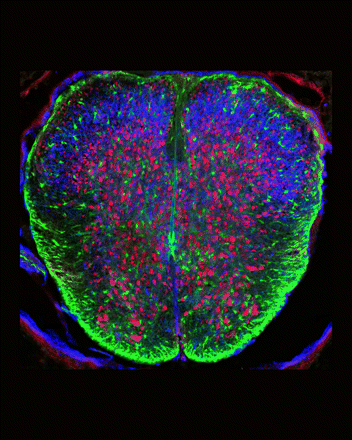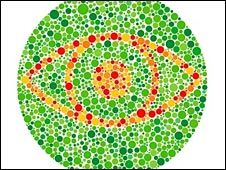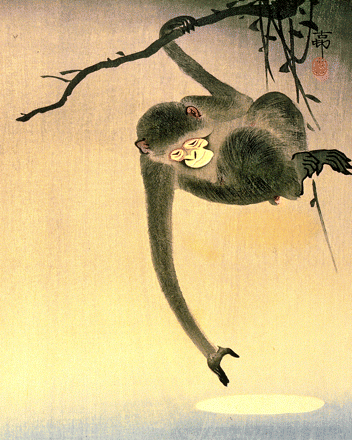Yesterday, I was just informed by the National Sleep Foundation that most mattress marketing is directed towards a specific demographic; women. This has recently changed as several companies have recently designed mattresses/bedroom sets for the modern man, according to The Wall Street Journal. Each mattress includes a frame, an LCD, flat-screen, high definition TV, and accompanying necessities (i.e. a remote for easy, quick channel flipping, and cup holders for frothy, frosty beverages). You can buy all these new guy-friendly mattresses for a cheap price of 30,000 dollars. Perhaps there is a reason mattress shopping was commonly done by women?! Or not, but I still want one.
Archive for September, 2009
A 30,000 Dollar Mattress?! I’ll take it!
September 30, 2009
BANNED Books Week!
September 29, 2009
This week, freethinking, rational people around the globe celebrate Banned Books Week. It is a global initiative protesting the prohibition of the most classic, inspiring, well-written pieces of literature in the history of the world (i.e. Harry Potter series, Catcher in the Rye, Huckleberry Finn) with anti-Jerry Falwell themes from being read in school systems and borrowed from libraries. Many of the underlying themes include magic (God hates competitors), homosexuality (God hates them too, as we know from the movie, Bruno), adultery (Oh wait, isn’t this a common theme in The Bible too?!), inter-racial friendships/relationships (Heaven forbid, God might be black, Asian, and/or a Muslim!), and other thematic considerations that may give God and his cohorts the heebie jeebies.
Ironic how my three favorite books of all times make the list: 1) Catcher in the Rye by J.D. Salinger; 2) The Adventures of Huckleberry Finn by Mark Twain; and 3) The Bell Jar by Sylvia Plath.
For more information, visit the website.
This Just In: Rodents Take Jello Shots, Engage in Risk-Taking Behavior
September 27, 2009
I am extremely ecstatic about a recent PNAS publication investigating the effects of adolescent alcohol exposure on risk-taking behavior. Rats, yes rats, were co-administered alcohol and gelatin (i.e. Jello shots) during adolescence and then engaged in a lever-pressing protocol designed to administer sugar pellets, another hedonistic, pleasurable treat, during adulthood. To measure risk-taking behavior, lever-pressing did not necessarily coincide with two pellets. Lever pressing would either administer two, four, or no pellets. Rats that had taken Jello shots as a “teenager” were more likely to engage in risk-taking behavior and would routinely press the lever, knowing that no pellets may be present. For more information, see the article.
In the meantime, I may have to develop another experiment assessing the effects of long-term alcohol exposure on circadian timing of awakening and the consolidation of locomotor activity. Perhaps the hedonistic properties of both alcohol and sugar will augment alcohol consumption and exacerbate alcohol-induced disruptions of the circadian timing system. There is only one way to find out. Plus, I may develop a reputation for being the coolest cat/graduate student in the department.
Neury Thursday: Neonatal Rainbows and Astrocytic-Induced Synaptogenesis
September 25, 2009
If that’s not enough neuroscience jargon for you this week, then read more of the Journal of Neuroscience. Before briefly summarizing this week’s featured article, I will comment on the words above, which sadly, have no layman substitutions. Astrocytes are starfish-shaped glial cells critical for mechanical support, nutrient delivery, chemical homeostasis, neurotransmitter reuptake (i.e. they have transporters that are neurotransmitter-specific and clear the respective neurotransmitter from the synapse), and recently found, sleep/wake homeostasis (see “GABA, Glia, Amygdala, and Blue Light” for more information). Synaptogenesis is not as daunting; (synapto=synapse) + (genesis=growth, anew) = synthesis of new neuronal synapses and greater communication between neurons.
In this picture, antibodies are labeled against green fluorescent protein (GFP), beta-galactosidase (which I remember nothing about from biochemsitry/bioenergetics, but quickly reminded through wikipedia: it’s an enzyme involved with the metabolism of carbohydrates, nuff said), and another neuronal marker. To read further about the integral role of astrocytes in synaptogenesis, here’s the article.
In the meantime, I will attempt to find an object in this 3D-esque stereogram (i.e. Magic Eye).
Monkey See, Monkey Color!
September 24, 2009
This is a pingback from last week’s Neury Thursday’s “Monkey See, Monkey Do” post that mapped various neuromodulatory systems tied to the integration of vision and motor skills. Also last week, UWash researchers employed gene therapy to treat color blindness in squirrel monkeys. Unlike humans, primates possess two opsins, which prevents them from having normal, trichromatic color vision found in humans and subsequently, from viewing the eye in the image below (adopted from Neitz’s laboratory at UWash whose spectacular findings were published in Nature).
Eventually, I imagine this novel research will also serve as a mediator in an assiduous debate over the importance of olfaction throughout human evolution; many olfactionists (i.e. smell researchers) theorize that olfaction became less valuable throughout the evolutionary history of primates and humans because of the development of color vision. Now we have an ideal model for testing this hypothesis/declaration.
Too Much Sleep = Dementia?
September 22, 2009
As the seasons change, I find myself awaking and sleeping with the sun; I’ve been sleeping in because of delayed sunrises and going to bed early because of advanced sunsets. Needless to say, I have been sleeping more. Today, I discovered this is not healthy, particularly because my family already has demonstrated to have genetic predispositions to Alzheimer’s. Every female on my mother’s side of the family (great grandmother, great aunts, grandmother) has died of Alzheimer’s thus far. Luckily, my two favorite vices, exercise and coffee, serve has protective mechanisms against Alzheimer’s by means of augmenting acetycholinergic activity. Alzheimer’s disease is intricately tied to acetylcholinergic neuromodulatory systems.
Why all this random talk about Alzheimer’s? Today, the National Sleep Foundation highlighted a recent study that found that long sleepers, people who sleep for 9 hours or more a day, including nightime sleep and daytime napping, have an increased risk of developing dementia, as assessed in a longitudinal study. Even more interesting, long sleepers are still remarkably more predisposed to developing dementia than short sleepers, people who sleep less than 7 hours a day. Quite the opposite of what a sleep researcher would expect.
If only the study dissected the neurobiology of these results. In the meantime, I must resist sleeping by the sun…..
Scientific Lunacy: Dreamcatchers
September 22, 2009
A few months ago, I made a huge mistake. I ordered http://www.montegraphia.com a birthday gift from Publisher’s Clearinghouse because it was frankly a rare John Deere collectible I had yet to find in retail stores. Since then, I daily receive entry forms for the next cash drawing and random free gifts from companies and non-profit organizations. One of these free gifts included a dreamcatcher. An example of scientific lunancy.
The constituents of a dreamcatcher include a willow hoop woven with netting and/or cheap string and feathers and beads which are considered to be sacred by Native Americans. In addition to having the power to manipulate and modulate dreams, dreamcatchers are symbols of unity among some Native American tribes, but yet are considered tacky by others. Perhaps it’s because the latter tribes don’t sell dreamcatchers at craft shows, and are simply jealous of the money the dreamcatcher-enamored tribes make to support their opium and/or alcohol addictions (Note: drug abuse of alcohol and opiods are highly prevalent in Native American tribes. The compounding roles of nature (genes and neuromodulation) and nuture (environment) in the etiology of drug addiction within this demographic have yet to be disseminated, however).
Aside from the history of dreamcatchers, we should not forget that dreamcatchers do NOT manipulate and modulate dreams, the frontal association cortex does (see “Hollah for Lucid Dreamers: A Thank You Note”). I own a dreamcatcher and I also lucid dream. Correlation or Causation? I think not. Paranormal and lunacy more like it.
Mice Prompt Murder: Seriously?
September 18, 2009
The shocking, saddening story of September is that of an Eli lab technician killing a graduate student over…..dirty mouse cages! The suspect, Raymond Clark III, who had no prior criminal and/or psychiatric history, murdered graduate student, Annie M. Le, and stuffed her behind dry wall after she allegedly did not practice proper animal hygeine. I imagine this incident will institutionalize a series of co-worker relations workshops in university and corporate animal care/research facilities across the country.
Cuckoo and crazy.
Neury Thursday: Monkey See, Monkey Do
September 18, 2009
In this week’s Journal of Neuroscience, researchers have shown integration of visual and motor systems involved with primate reaching for objects. A specific area of integration is area PE of the posterior parietal cortex.
Take One For The Team: Science Reveals
September 16, 2009
Today in Nature, Oxfordian researchers investigated how teamwork mediates pain tolerance. Individuals who work together, push each other, and motivate each other during a high intensity, grueling workout have a higher pain threshold than individuals who work out solo. I imagine this is owing to the psychological and physiological motivation, through the escalation of self-esteem and secretion of endorphins, respectively, a team provides.
Now I understand why I never wanted to do those 8×200 meter sprints at 100% with a 30 second rest in between by myself…..



